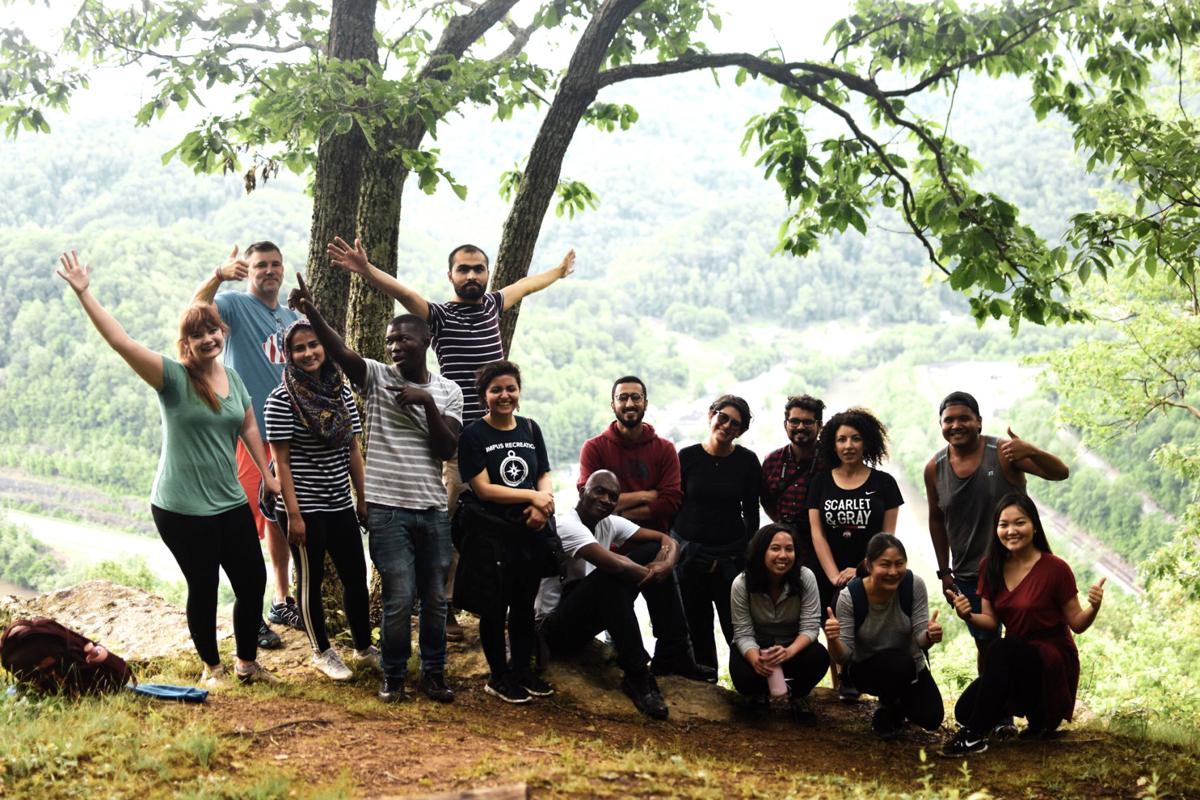
Hamza Rehman, 2013-2014, Pakistan (left) engaging with a diverse, interfaith crowd at his local mosque’s open house in Manhattan, Kansas. The mosque event sought to dispel common myths and stereotypes about Muslims in the United States.
Pakistan is a country rich in cultures: Pathan, Punjabi, Baluchi and Sindhi, amongst others. As a Fulbright Student at Kansas State University, I aimed to convey some of Pakistan’s diversity and ethos in my fiction and non-fiction courses as a part of the Master of Arts in English Literature and Creative Writing program. To the United States at large—through conversation and interactions, I brought to life Pakistan’s historic Indus Valley Civilisation and its vales, mangrove forests, the Baltoro Glacier, the snowed-in Himalayas, the Karakoram and the Hindu Kush. To my Kansas State (“K-State”) peers in fiction workshop, I highlighted Pakistan’s diversity in my writing and engaged its many tongues and motley racial make-up: from blue-eyed, dark-blondes to tan-skinned, black haired characters.
Given Pakistan’s own ethnic and lingual heterogeneity, I was surprised when a K-State PhD candidate in Psychology solicited my help for a peculiar reason: because I was Pakistani, he wanted to use my voice in an “accents study” for his dissertation as an example of the “Arab accent.” Although I lauded his project and agreed to volunteer, his geography seemed off to me. After considerable explanation from my side, he reluctantly came to appreciate why I didn’t sound Arab: South Asia isn’t a part of the Middle East! He had said, “But it’s the same thing, right?” I responded, “No. Here’s a map. For an Arab accent, I’d begin with the Arab world, and even there, Arabic varies from country to country, and even city.” He narrowed his eyes incredulously, realizing “Muslim” didn’t always imply “Arab.” In that moment, the world became bigger for him, became less “U.S. and the rest.”
For this reason, when the Islamic Center (ICM) in Manhattan, Kansas, my university town, needed volunteers for conducting an Open House, I immediately offered to contribute. I felt it would be an ideal platform to clarify ill-conceived perceptions of homogeneity in the Islamic world. I hoped, perhaps, it would bring crucial, albeit limited, change to Kansans in my locale. The Open House, held on November 8, 2014, was a guided tour and visitors learned about the key pillars of Islam, similarities between the Holy Bible and the Holy Qur’an and academic services provided by the ICM. Kansans mixed with an eclectic crowd of Muslims at the center: Europeans, Africans, Middle Easterners, South Asians, Far East Asians—and of course, Americans. It was an eye-opener for many, as they came to grasp Islam’s broad reach and comprehend its simplicity as an Abrahamic faith, like Judaism and Christianity. I provided them with a history of Prophet Muhammad’s life (peace be upon him) and a brief history of Islam, along with common personalities, names and prophets appearing in both the Holy Bible and the Holy Qur’an. I spoke about Islamic landmarks and answered questions. Organizing the Open House also required painting and cleaning the Islamic Center, which I eagerly participated in. The event was covered by local media, the K-State Collegian and the Manhattan Mercury and it was a success in proving a truer image of the diversity within the Muslim world – especially at a time when considerable ambiguities exist in the media’s reportage and portrayal of a vast culture to American audiences. I was glad to be a part of it!


2 Comments
Great job job.. support your people, give them strength. that’s how you grow as country, as person, as a community.
Thank you very much for the kind words.